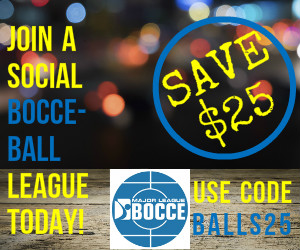iFAQ (inFREQUENTLY ASKED QUESTIONS) | An Interview with D4N Curator Alex Czetwertynski
Tell us about the artists you’ve chosen to work with. How/why did you choose these particular artists? What, in the way of style, content, and/or practice ties them together? Is there an overarching theme to the show? And how are they different from one another?
There is both variety and unity in the group of artists we selected. Variety because they all belong to different spheres of what one could call “digital art”, to use a very overarching term. Some of them create art through software (computational art), others with light and space, others design interactive experiences at large scales.
The common threads between them is that they use space, light and sound to create an experience. This is a key word, because as we know, experiences can never be perfectly identical, either for oneself, or between individuals. To paraphrase Heraclitus, “one can never walk twice in the same river.” And I insist on this because none of this art is designed to be experienced twice in the same way. As opposed to a piece of art that is fixed, designed to live in one place (or one type of place) and physically static, this art is kinetic, spatial, often site specific, and requires time, movement and at least two senses to be fully experienced.
The theme of the show can be found in it’s name, “Day for Night.” In filmic terms, Day for Night is a scene shot during the day but “pretending” to be a night scene . This is not an easy thing to do, but the effect is striking. There is a phenomenological shift. What we are interested in here is to use the massive scale of the venue to not just “trick” perception, but to stretch it, and see what happens. If you were to wear a phenomenologist’s hat, you could say that we are interested in embodied perception, something which today is often described as an “immersive experience.”
Another theme is sound. Since this festival is both a music and visual arts festival, we wanted to make sure that sound was part of each of these artist’s process. This means that in some cases you will hear sound, but in others sound will inform the visuals. Some artists will be taking in ambient sounds, others will be create completely bespoke sonic landscapes.
Will all the visual artists be showing their work in the same space(s), turn by turn, or will each have her/his own dedicated area on the festival grounds where their work will be presented for the full duration?
Each artist has his own location. The artworks will be spread across the whole campus, both indoors and outdoors. The artists that are presented indoors will be shown from doors open to doors close. The outdoors artists will show from dusk to doors close.

Not all the pieces are interactive. And when it comes to sound, the approaches are all different. I didn’t even know WinAmp still existed, but no, you will not have “screen savers.” In the few cases of projections with no interactive input, the purpose will be to let sound and visuals interact, support each other, or play with synaesthetic effects.
Since this is the first year, we decided against pairing musicians and visual artists. We hope to do that in the future. The type of art we are showing is not easily seen aside from art festivals, galleries and online, and that is really exciting for us, as the audience that comes to a music festival doesn’t already know what to expect. So we hope to create a first experience that will be a form of “introduction”. The next step is to start digging deeper into how visual artists/musicians/audience can interact.
What would you say to someone who says this is little more than “eye candy?” Can you imagine that any portion of the show might be difficult to look at? I ask because I am distrustful of happy endings — I don’t buy them — and I’m quick to dismiss pretty, sparkly things as vacant, vapid, empty “decoration,” not Art.
I would say that some of the work you will see at Day For Night will be purely aesthetic. I don’t know if that falls under the category of eye candy, however I think you are referring to the idea that for art to be good, it should somehow disturb you. I tend to think that for something to fall into the category of “art,” it should be something that you create a relationship with. In other words, it can’t be something that you “get” right away, it should give you a first impression, then add to it, change it, plant seeds of thoughts that you will come back to later. These thoughts don’t have to be explicit or discursive, they can be shreds that barely stick together, but they still hang around in your mind. And if the work also appeals to your sense of beauty, why not?
At Day for Night, in some cases you might be in for some short rides, things the audience will appreciate for their delicacy or their playfulness. Others will dig deeper, give you food for thought and take you on those longer explorations. But they will require patience and attention.
To go back to phenomenology, there is something very touching to me about approaching this large group of human beings with art that is huge, sensorial, that can never be paused and put in a box, that requires time to experience and a certain acceptance of the work’s own mortality, at least in its current incarnation.
So I do hope that you don’t dismiss them, or at least not all of them.









